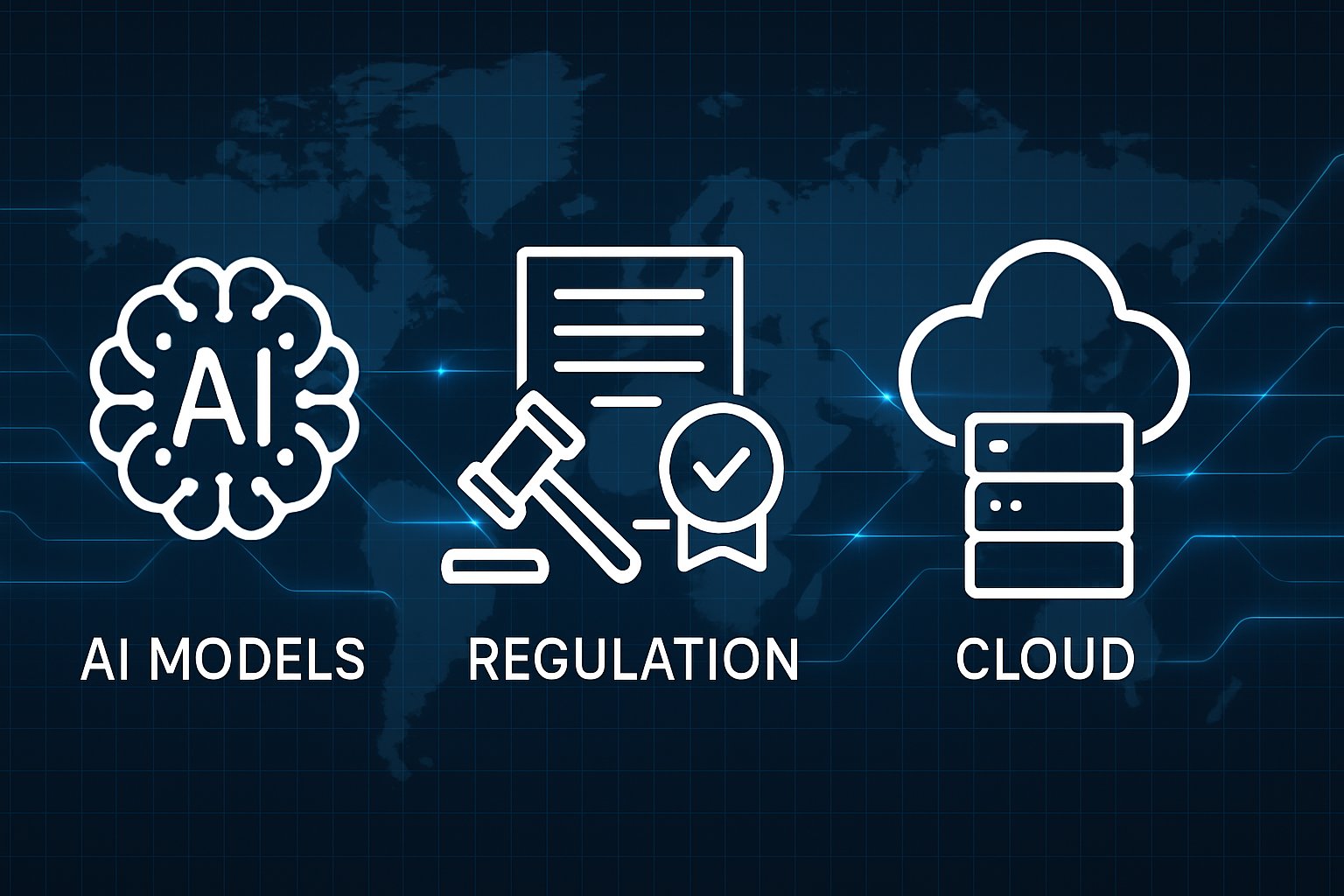
AI CERTS
1 day ago
AI trend summary: models, policy, infrastructure insights
Executives face pressing questions about compliance timelines and compute supply. Therefore, we examine EU Act milestones and the U.S. executive order roll-out. Meanwhile, hyperscalers and chip makers push Blackwell systems toward exascale ambitions. In contrast, open ecosystems offer affordable paths for experimentation and sovereignty.

Throughout, balanced perspectives reveal both promise and peril for industry professionals. Subsequently, readers gain actionable insight for 2025 strategy decisions.
Open Source Models Surge
Open source models gained velocity with notable launches from Mistral, Google, and Alibaba. Additionally, Mistral's Medium series delivered competitive reasoning while keeping weights downloadable under permissive terms. Google extended the Gemma line, and Alibaba shipped Qwen 3 variants supporting 128K-token windows. Consequently, developers fine-tuned these assets on-prem, avoiding vendor lock-in and audit blind spots. Gartner analysts note that community distribution accelerates vertical innovation but raises misuse concerns. This section of the AI trend summary shows how openness changes competitive dynamics.
Open source models now rival proprietary systems on many tasks. However, governance gaps remain; the next section reviews resulting policy updates.
Policy Updates Shape Compliance
Regulators shifted from drafting to enforcement during 2025. Furthermore, the EU Artificial Intelligence Act entered force, banning certain practices from February 2025. Additional obligations for GPAI transparency and fines phase in through 2027. Meanwhile, the White House declared that agencies had finalized risk frameworks and testbeds. Therefore, enterprises must map model usage against both regional and sectoral requirements. This part of the AI trend summary explains why timing matters.
Policy updates redefine acceptable AI conduct and documentation duties. Consequently, infrastructure choices gain urgency, as explored next.
Infrastructure News Highlights Scaling
NVIDIA's Blackwell GPUs dominated infrastructure news with promised efficiency leaps. Moreover, AWS, Dell, and others announced Blackwell instances, fueling infrastructure news about capacity. Vendor claims cite multi-trillion parameter training finished weeks faster than previous generations. Consequently, Gartner forecasts generative AI spending reaching US$644 billion in 2025. However, analysts warn that centralization around hyperscalers may squeeze smaller players. Accordingly, this AI trend summary tracks compute concentration risks.
Infrastructure news underlines a compute arms race now setting industry pace. Subsequently, we examine spending statistics and market signals.
Enterprise Spending Data Points
Gartner projects 76 percent year-over-year growth in generative AI outlays during 2025. In contrast, Precedence Research pegs AI data-center value at US$165 billion by 2034. Moreover, Reuters reports multi-billion cloud deals between labs and hyperscalers negotiating long horizons. Jensen Huang asserts that AWS collaboration delivers “unprecedented computing power” to customers. Nevertheless, CIOs fear proof-of-concept failure rates and escalating integration costs. Accordingly, this AI trend summary contextualizes the numbers.
- Gartner: US$644 billion generative AI spending forecast for 2025.
- Market Research: US$165 billion AI data centers expected by 2034.
- Reuters: Multi-billion cloud contracts signed during 2025.
These figures confirm rapid capital flows toward compute and talent. Therefore, understanding benefits and risks becomes vital.
Benefits And Risk Balance
Supporters argue that open source models cut costs, enhance auditability, and foster global participation. However, critics warn of deepfakes and malicious code from uncontrolled weight distribution. Additionally, centralization around megascale clusters raises sovereignty and competition questions. Meanwhile, phased EU rules attempt to balance innovation with safeguards. Experts recommend layered security, watermarking, and governance to mitigate misuse. This AI trend summary weighs the trade-offs.
Benefits remain compelling, yet unmanaged risks can erode trust. Consequently, strategic outlook matters, as discussed next.
Strategic Outlook For 2025
Industry leaders anticipate coexistence between frontier APIs and open source models. Moreover, accelerated chip launches will keep infrastructure news in headlines. Policy updates will demand transparent documentation, stress-testing, and voluntary reporting. Organizations should upskill staff through recognized programs. Professionals can enhance expertise with the AI Foundation certification. Consequently, teams will align capabilities with evolving regulation and market demand. This closing segment of the AI trend summary offers guidance.
Forward-looking organizations blend compliance, compute, and talent for resilient advantage. Hence, this AI trend summary offers a roadmap for informed action.
Conclusion And Next Steps
Open source models, rigorous policy updates, and transformative infrastructure news defined the last twelve months. Furthermore, spending forecasts and expert commentary underscore both opportunity and risk. Nevertheless, balanced strategies can turn uncertainty into competitive gain. Therefore, leaders should monitor new regulations, diversify compute options, and invest in talent. Additionally, pursuing the linked certification strengthens organizational readiness. Consequently, act now to translate insights into measurable advantage.



